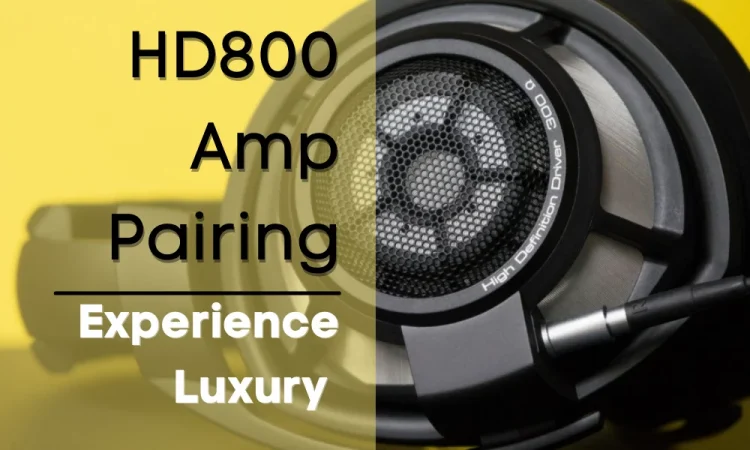A lot of amplifiers are designed to have matching power tubes. Whether it’s for your guitar or audio application, power tubes need to be matched.
If you don’t want to reduce your speaker audio quality, you should know how to match them.
So, how to match power tubes?
You can match the tubes by following either the Balancing Act or the Static Conductance Matching. The straightforward method is to buy power tubes from the same company. However, there are some details you need to make sure to choose the correct method. More on that below.
This is all you need for matching the power tubes of your amplifiers. Spare a minute and read this piece to know all about matching tubes.
Ready?
First Things First, How Do Power Tubes Work?
Power tubes use the heat from electricity flow to release negatively charged electrons from the cathode to the positively charged anode. The grid connected to the guitar lies between them, controlling the electrons with signals.
That can effectively maximize the number of electrons reaching the anode, amplifying the signal. That’s how power tubes work.
The power tube primarily uses the properties of electrons in a vacuum. Electrons normally do not travel with air as a medium, however, that changes in a vacuum.
The inside of a power tube is a vacuum. That allows the electrons to travel from cathode to anode, controlled by the guitar pickup signals.
Power tubes for guitar amps regulate the overall output of the amplifier. It works with preamp tubes to produce the guitar tone. Furthermore, the iconic ‘harmonic distortion’ from amps comes from the power tube.
Many consumers also question the durability of the power tube due to its fragile nature of the tubes. So, How long do power tubes last?
Power tubes generally last for about 2500 hours or so with some going up to 10,000 hours. In terms of your calendar, a tube’s good for ~6 months to 1 year under regular usage. So, not very long so to say.
Now you know how a power tube works. So, do power tubes make a difference?
Power tubes improve the music you make. You’ll see improvements in the warmth, clarity, and flow of the music. That is exactly why it is still preferred over more modern technologies for amplification.
However, that is only the tip of the iceberg. Let’s now talk about tones. Do power tubes affect tone?
Power tubes do affect tone. Specifically, the interaction of the power tube with the amp introduces differences in tone. Furthermore, no two tubes interact the same with amplifiers. So, depending on the tube, you will see a difference in tones.
Anyhow, before actually matching the tubes, let’s get into the reason why you would want to do it.
Why Do You Need to Match Power Tubes?
You need to match power tubes because of the differences in idle plate current and amplification characteristics.
I would recommend you test the plate current draw under real-life operating conditions if you have tubes. You won’t get the best out of your tubes otherwise.
Here’s a tweet explaining the profoundness of power tubes –
This is also where power tubes differ from preamp tubes. You don’t need to match preamp tubes. That is because preamp tubes can bias themselves. However, preamp tubes that share a common bias voltage don’t fall under this condition. For example- push/pull class AB circuit.
Thus the general consensus is that you need to match your power tubes.
If you’re still not convinced, then I’ll still approach it from a different angle.
Let’s assume, you already have unmatched power tubes. These are the basic differences you can expect when it comes to matched vs unmatched tubes.
Matched tubes give you the best sound quality you can get out of a tube. Furthermore, because they operate on the same bias voltage, you can use them for a longer time because of stable voltage.
Whereas your tubes will produce bad sounds if they have unmatched voltage. They won’t last long either because of voltage instability.
| Aspect | Matched Power Tubes | Unmatched Power Tubes |
| Longevity | Win | Loss |
| Sound Quality | Win | Loss |
It’s very clear now why you need to match power tubes. I’ll walk you through the process of matching the power tubes now.
How to Match Power Tubes?
The easiest way to match unmatched power tubes is to bias-adjust their output to center the sound. The quick hack is to buy power tubes of the same model. They are already adjusted with the same bias voltage.
You can test if the power tubes are matched easily with multimeters that have the bias function. Alternatively, your ears do the job just fine, the adjusted tubes will audibly sound better.
Realistically, however, you won’t be able to match power tubes with 100% accuracy. There is a baseline for it. So, how close should tubes be matched?
The tubes’ bias voltage difference must not exceed 5%. In other words, the difference must not be more than 1 milliamp per 20 milliamps. Beyond that is the unmatched territory. Basically, The lower the difference the better.
There are 2 ways to match your power tubes efficiently, they are-
1st Way: The Hassle-Free Solution
The Hassle-free solution from the get-go is buying pre-adjusted Tubes. They are often called a matched pair of power tubes.
Companies match power tubes based on their plate current. They test the power tubes before releasing them. All you have to do is buy the matched pair. That is why this is a hassle-free option.
However, a slight misadjustment by the companies results in a bad tube. There’s a way to tell a bad tube just by how they sound. So, what do bad power tubes sound like?
Bad power tubes result in either excessive or low output, along with squealing sounds, and muddled audio. These are based on sound, the visual symptoms are a blown fuse and/or a red glowing tube.
2nd Way: Adjusting The Power Tubes
The other option is the adjustment. But you must first figure out which kind of configuration your amplifier requires.
There are two configurations of power tube matching-
- Balancing Act
- Static Conductance Matching
Balancing Act: In this matching configuration, push-pull amplifiers are used. Just make sure the power tubes share similar characteristics. That’s it.
However, there are some aspects of the balancing act that you might need to think twice about. The drawbacks and their effects are explained below-
Tube Variation: The consequences of tube variation are-
- Vary from tube to tube
- The difference between the maximum and minimum range is double.
Static Ip: The range of static amplifier current will be unstable. The consequences of the static Ip range changing are-
- The output of the amplifier will be imbalanced.
- Diminishes the effectiveness of low-frequency
Dynamic Frequency: The consequences of dynamic frequency are-
- Conductance varies from tube to tube
- Asymmetric operations
- Decreases sound quality
- In extreme cases, shortens the life of power tubes
Regardless of its cons, the Balancing Act is used to match power tubes in all sorts of amplifiers.
While on it, you might also want to check out tube preamp and solid state differences.
Static Conductance Matching: The tubes in this configuration are matched based on similar dynamic conductance (gm) and static current (Ip).
That’s why this setup is known to give the most accurate outcome of matching power tubes. You can do it with a tube tester.
If you don’t have one, use a champ clone to measure the tubes, one by one. You can group the ones with a similar current.
Matching the power tubes using this configuration gives us-
- The optimal performance of our amplifier
- Minimized distortion (tube dampers can be used for extreme cases)
- Minimized loss of frequency range
Since this configuration gives optimal results, all amplifiers can use this process to match power tubes.
Here are my best recommendations for power tubes-
| Product Name | Well Known For | Check The Price |
| Mullard EL34 Power Vacuum Tube | Dynaco ST-70, Vintage Marshalls, Hiwatt, British Amps | Check it out! |
| JJ EL84/6BQ5 Power Vacuum Tube | Vox AC30 | Check it out! |
You should know how to match power tubes by now. As a result, you should also know better than to mix it up with preamp tubes.
Are Power Tubes and Preamp Tubes the Same?
Preamp tubes and power tubes are two different components of a tube amp. Power tube controls electric flow whereas preamp tube amplifies low voltage signal to a high voltage one. They both work in tandem to produce the guitar tone.
So in short, no power tubes and preamp tubes are not the same.
Extra Tips
There are some tips you need to learn before you get on to the steps for matching power tubes. And you definitely don’t need to be tech-savvy to understand these. You can thank me for the help later.
-Adjust your amplifier bias with a specific value (it’s ideal to have 1/8 of average full power). After that, you can continue using the tube that matches the value from the same company.
This way, you don’t need to re-bias your amplifier. Though we recommend bias-adjusting amplifiers for a longer amplifier life. You need to adjust every time you replace the tubes.
-Sticking to the same brand-matched power tube can ensure optimal performance of your amplifier. No need to experiment with other tubes from different companies.
You can now properly match your power tubes! So hurry up and get to work.
FAQs
How to tell if tubes are matched?
If you have bought tested power tubes, then you can check the box or manual showing the precise value of the matching tubes. If your tubes are not tested, you can test their values using a digital matcher.
When to replace power tubes?
It is ideal to change the power tubes every once a year. This helps to keep your speakers and amplifiers in good health. It’s even better to replace the tube every 6 months. Although some power tubes have good longevity, maintaining your speakers is mandatory.
What does tube matching mean?
Tube matching refers to the matching of tubes with equal current draw. It means that an amplifier draws an equal amount of current from both of the matched tubes.
Matching power tubes can enhance the quality of the sound of your speaker or guitar. Amplifiers without matching sets of power tubes suffer from subpar sound quality.
Parting Words
Now that you know how to match power tubes, you’ll be able to change them the next time your amplifier needs a replacement.
Replacing amplifiers can be risky. And we don’t want you to be in any trouble. So, make sure you follow all the rules for replacing power tubes strictly.
Do let us know which of the configurations you are going for in the comments section below.
Till then, keep chilling with the beats!



Don’t forget – SAFETY FIRST! Always unplug and allow a1/2 hr. or so for your tube amp to de-energize its caps to a safe level if and when you have to get inside it to replace the rsistor, like in the Fender VVRI, or install a 20K Ohm pot.